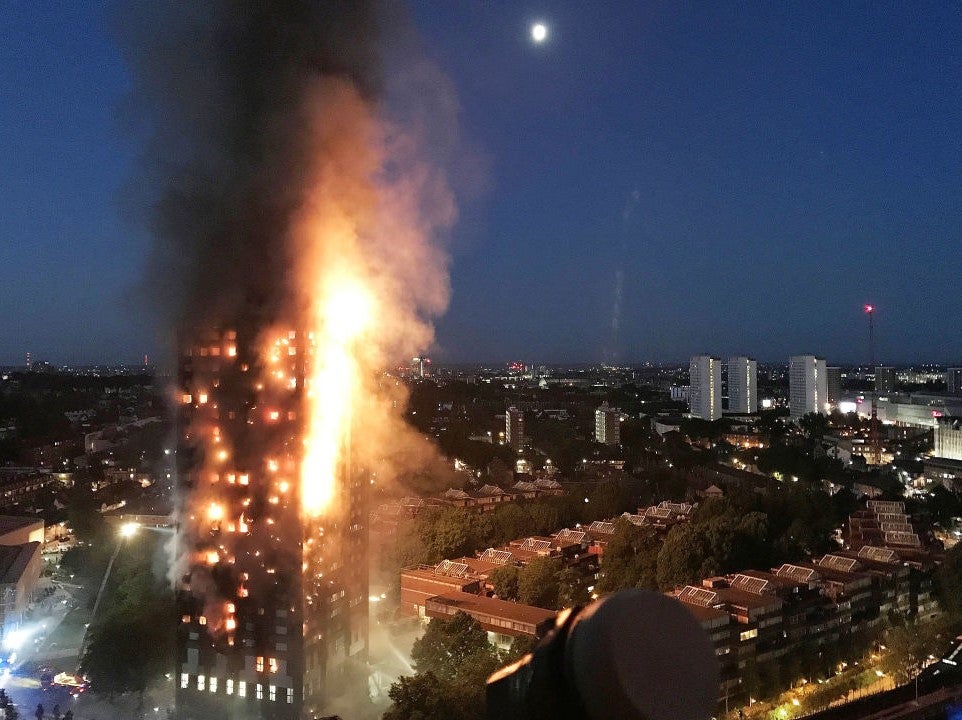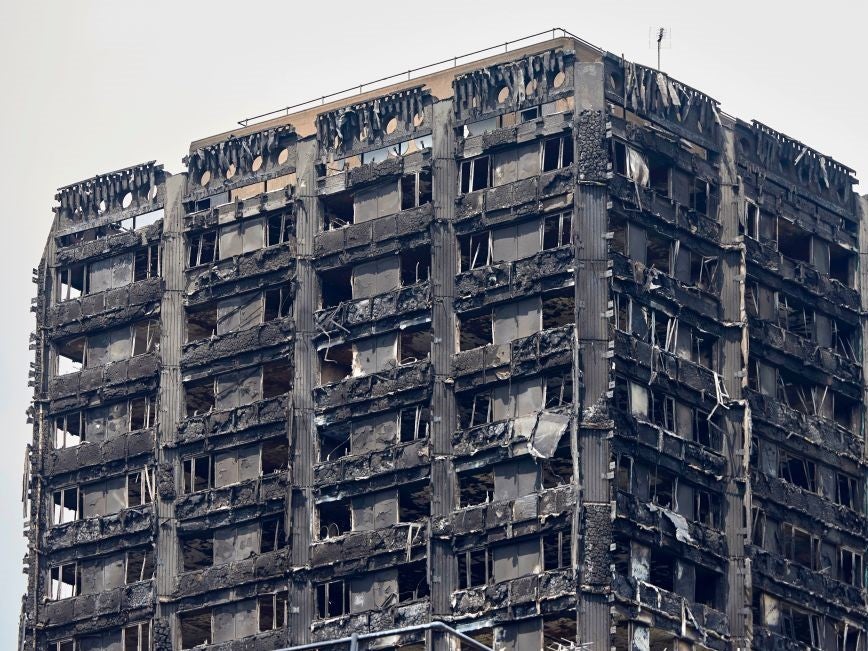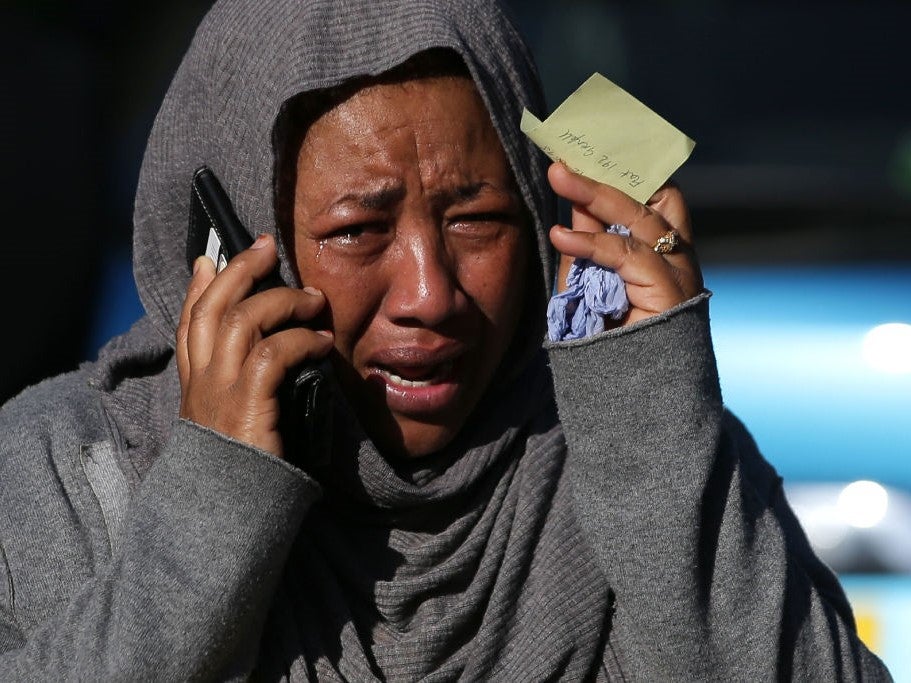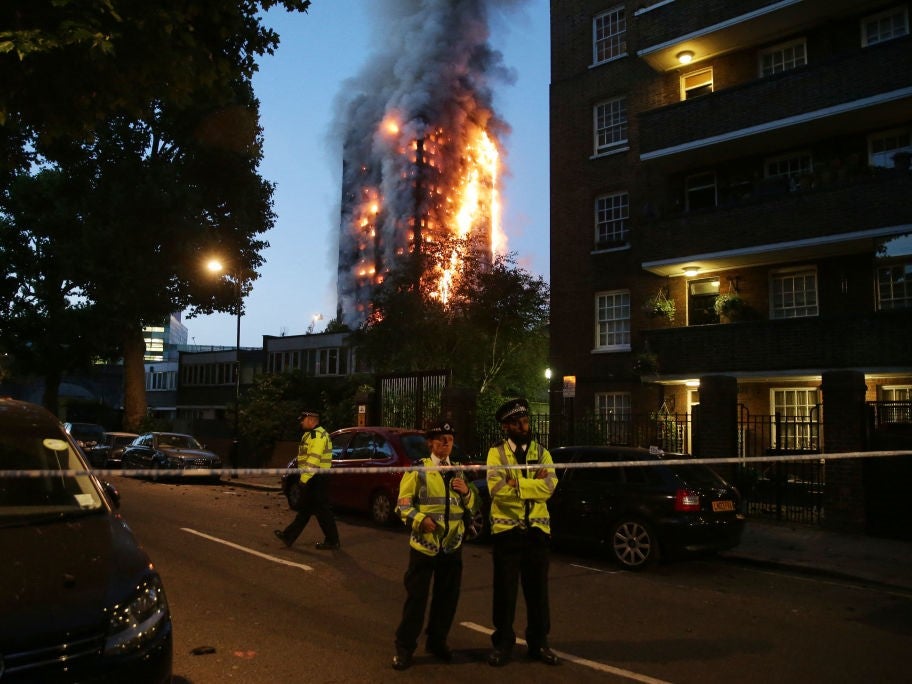‘We’re still having to fight’: Grenfell survivors’ battle for justice isn’t over five years on
It began at 12.54am on 14 June 2017 and became the deadliest blaze in England for 120 years. Five years on, survivors tell Colin Drury they’re still struggling to right the wrongs of that fateful night
Shortly after 1am on 14 June, 2017, Richard Fletcher looked at his six-year-old daughter curled up in bed and debated allowing her to die peacefully as she slept.
The transport worker had been woken by an inferno engulfing Grenfell Tower, where the family lived on the 16th floor.
“Momentarily, I thought the best thing to do was to climb back into bed with our daughter, with my wife and me on either side, to cuddle up with her and let the smoke and fire take us,” he later told the official inquiry.
“I thought it was better and kinder that we let her continue to sleep and die quietly. I did not want her… last minutes to be moments of terror.”
It was a thought he ultimately dismissed.

The family of three plunged out into the pitch-black, smoke-choked central lobby where, somehow, they found the stairwell and managed to do what 72 tragic souls never would: escape the burning building.
They survived, said Fletcher, 47, because of nothing more than “a stab in the dark” at fleeing.
Tuesday marks five years since the Grenfell Tower fire, in North Kensington, west London.
Yet even half a decade on, the sheer scale and horror of the catastrophe – the deadliest English blaze in more than 120 years – remains almost impossible to comprehend. The stories are still as harrowing as they ever were. The fact that survivors are still fighting for justice long after it was revealed the building’s highly combustible cladding effectively made it a tinder box is, campaigners say, both a national disgrace and an indictment of the government.

“This was a failure of the British state to protect its citizens,” says Professor Paresh Wankhade, an expert in leadership and emergency service management at Edge Hill University. “Disasters do happen – this is a fact of life, unfortunately – but, in the UK in the 21st century, 72 people should not be allowed to die in a fire in the middle of the night.
“The key thing now is that lessons are learnt but at the moment it’s not entirely clear that those lessons – in building safety certainly – are being learned.”
It was 12.54am that night when Behailu Kebede, woken by a smoke alarm, called 999 to report a fire had broken out around the fridge-freezer of his fourth-floor flat. By the time firefighters entered the apartment at 1.07am, the blaze was well out of control. Two minutes later, at 1.09am, the flames made the leap that would transform this from a difficult but routine domestic incident into an unparalleled modern calamity: shoddy building work meant the fire escaped the apartment via a window space and began tearing through the block’s highly flammable external cladding.
Within minutes, flats up and down the tower were ablaze and thick smoke was funnelling into the central lobbies and single stairwell. Within an hour, the fire was ripping across three sides of the building. Pretty soon it had engulfed the fourth too.
“There were people screaming for help out of windows,” says 25-year-old Tiago Alves, whose family made it out of their 13th floor flat after his mother and father happened to arrive home from an evening out just as the blaze was beginning. “They were up there and we could see them, and there was nothing we could do. Our neighbours, our friends. You can’t describe how that feels.”

Inside, residents awoke to face the choice of either staying put and hoping for rescue – as official advice dictated until 2.47am – or attempting to get through the smoke and heat to make their way outside. It was an impossible choice. People died doing both.
Eighteen children were among those killed. One, six-month-old Leena Belkadi, was found dead in her mother’s arms, the bodies of her father and sister nearby. Six members of one family died, five members of two more. One 12-year-old girl, Jessica Urbano Ramirez, spent 55 minutes on the phone to 999 begging for help before she succumbed. Almost half of the 72 who perished had disabilities that limited their ability to escape.
One resident, Farhad Neda, recalled his father, Saber, helping four neighbours prepare for evacuation by placing wet towels over their faces. “The last vision I have of him was… getting the ladies and himself ready to face that thick, black smoke,” the son told the ongoing Grenfell Tower Inquiry. “He died trying to save their lives.”
Another, Ahmed Elgwahry, described speaking to his mother, Eslah, and sister, Mariem, on the phone in the moments before they succumbed to the smoke. “She was struggling for breath,” he said of his mum. “[She] said her last words: ‘I can’t breathe, I can’t breathe.’ That was the last time I heard her voice.”
There were apparent miracles too. A nine-year-old boy, Amiel Miller, saved his family after waking up in his 17th floor bedroom and smelling smoke. “He ran into our bedroom and woke his mum,” father Jason, a 42-year-old product manager who was staying at his mother’s that evening, says today. “That meant they got out straight away. He’s a hero. I tell him every day, even now. If he hadn’t done that, I wouldn’t have a family today. They had soot in their nose as they came out that building. If they’d been a few minutes later, who knows?”
Firefighters themselves fought heroically under what the lead police investigator, Simon Fox, later called “apocalyptic” conditions. But the 40 crews were hampered, firstly, by a lack of training in dealing with cladding infernos and, second, by multiple fire safety defects within the building. The smoke extraction system was not working and there was no wet riser – a crucial water-filled pipe that runs up tall buildings precisely in the case of a blaze. Fire doors did not shut.

“Everywhere we look[ed], building failures caused what we saw and experienced that night,” recalled one firefighter, Jon Wharnsby, later.
Today, the Grenfell Tower Inquiry continues. Led by retired judge Sir Martin Moore-Bick, it has heard hundreds of hours of testimony and sifted through millions of documents. Police, meanwhile, are investigating a range of offences including corporate manslaughter, gross negligence manslaughter and fraud.
Yet, as time passes, there is increasingly little faith that either significant change or prosecutions will follow.
Just last month, the government announced it would not implement recommendations calling for high-rise towers to have evacuation plans and, instead, would continue to recommend a “stay put” policy in the case of fires – a decision branded a “disgrace” by the Grenfell United group.
While the polyethylene-cored cladding that caused the fire to spread so rapidly has now been banned on new-builds, some 9,973 buildings across the UK remain classed as “unsafe” due to either flammable material being wrapped around them or other associated risks. Ongoing arguments about who should foot the bill to replace dangerous cladding means tens of thousands of people continue to live in homes now known to be dangerous.
“They go to bed every night knowing that they are inside what is basically a powder keg, all while the government dithers,” says Joe Delaney, of the Justice for Grenfell group. “The stress of that is intolerable. There are stories of neighbours organising 24-hour watches – just to have the luxury of not burning alive.”
Crucially, despite growing evidence that multiple companies were aware (or should have been) of the fire hazards created by the Grenfell Tower cladding – installed cheaply during a 2015-16 refurbishment – no individual has yet been held accountable for the tragedy.
It all means that, five years on, for survivors it feels like nothing has really changed.
"This week will be a difficult week for everyone affected by the fire,” says Natasha Elcock, chair of Grenfell United. "For many of us the events five years ago are still so raw in our minds and our losses remain heavy in our hearts."
Alves, a masters student who is a member of Grenfell United, says: “All we want is for this never to happen again. The best way to achieve that is for tenants to have a greater legal voice in how their buildings are run and for greater regulations in terms of fire safety and materials, and who is responsible for those things.
“And it’s so obvious that this should be done that it’s infuriating that we are still having to fight for it. But we will keep on. It’s the only way those deaths won’t be in vain. If we can use their memories to ensure no one else ever has to go through the same pain, then some small good will have at least come out of this.”
Join our commenting forum
Join thought-provoking conversations, follow other Independent readers and see their replies
Comments


Bookmark popover
Removed from bookmarks